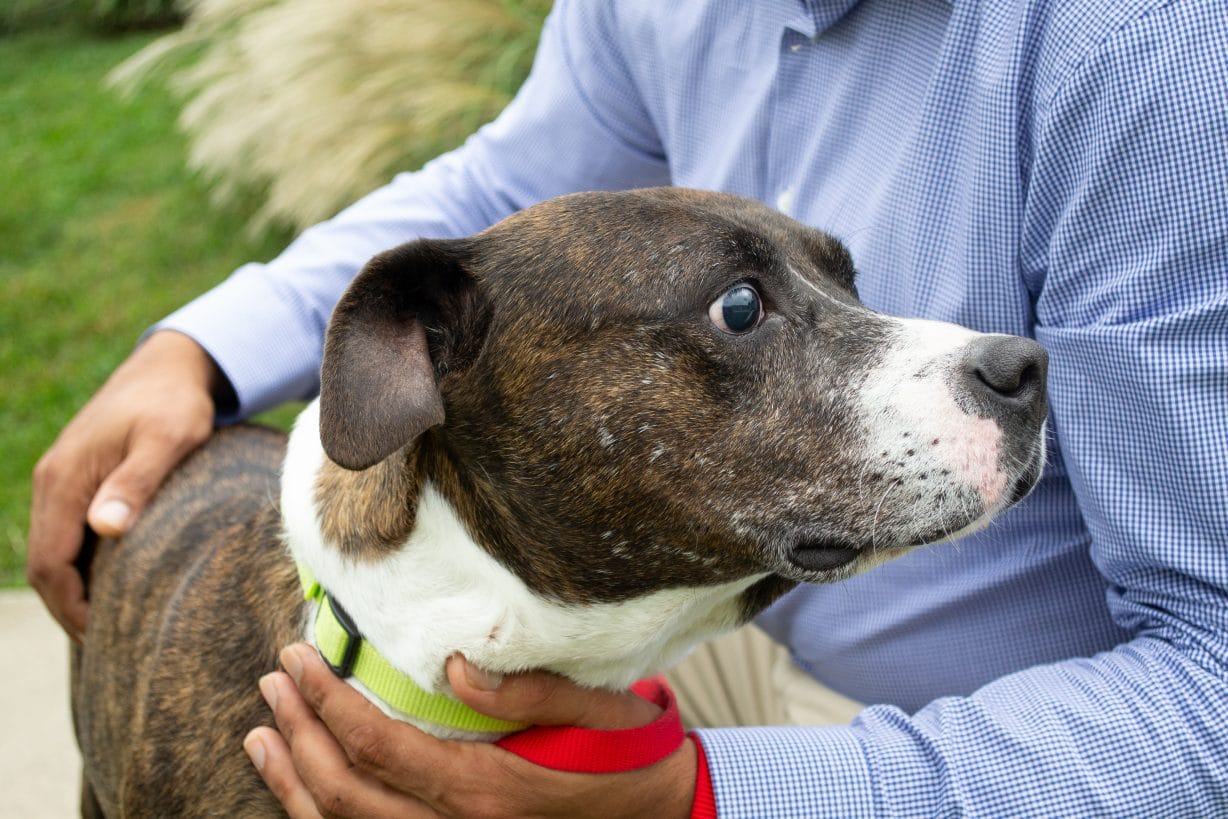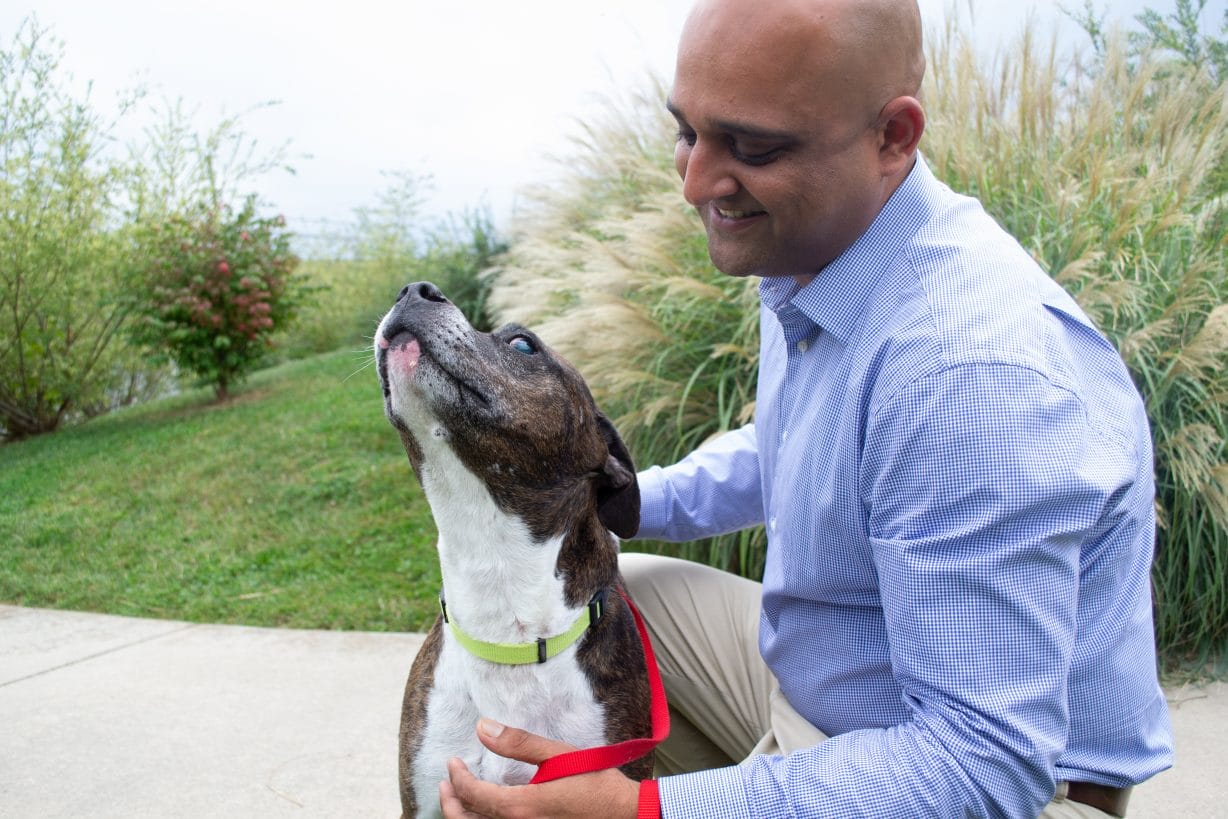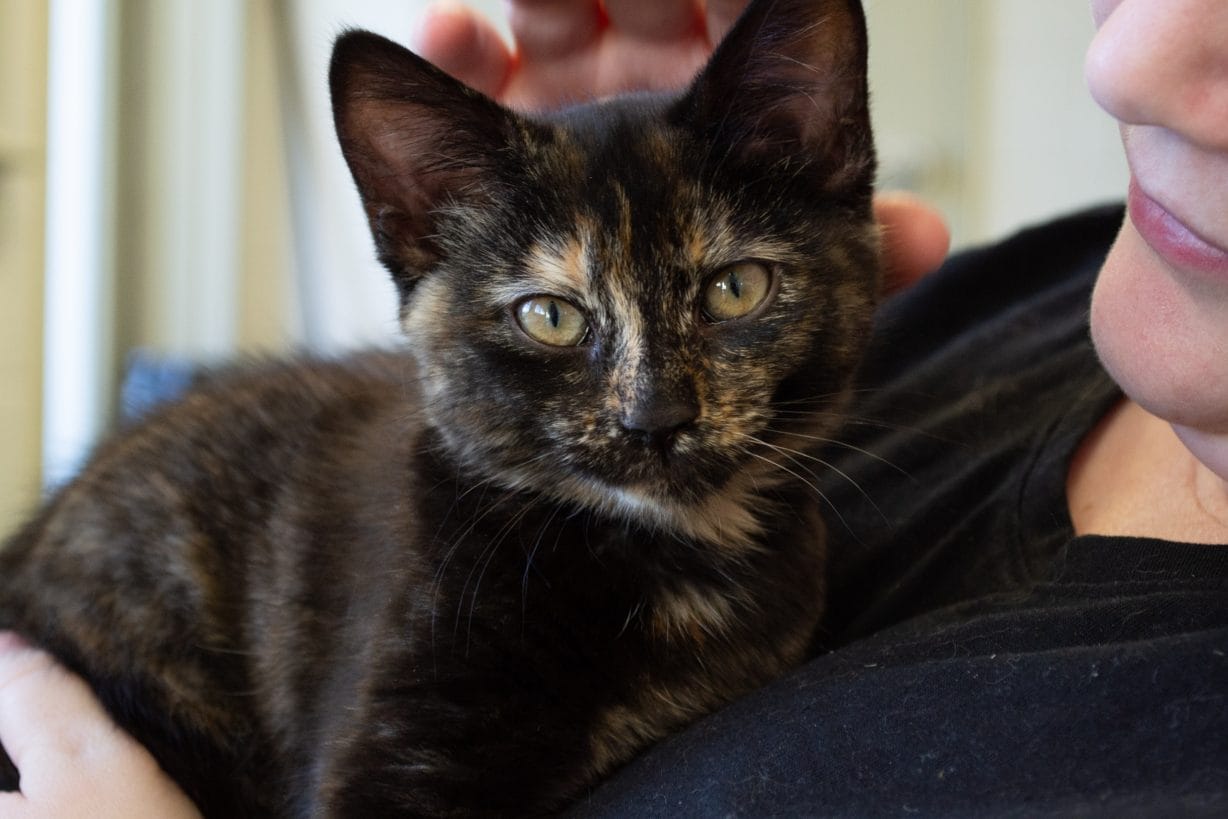
By Randi B. Hagi, assistant editor
Fred is an affectionate, inquisitive fellow — energetic despite some ongoing health struggles. This isn’t a personal ad, although Fred is looking to meet the right person. He is a five-year-old dog, named after the teen sleuth from Scooby Doo, and he’s a current resident of the Rockingham-Harrisonburg SPCA animal shelter.
“He’s super sweet,” said Huck Nawaz, the shelter’s executive director. “He was one of 14 dogs that came in off a property where the owner was unable, or unwilling, to provide adequate care for them.”

Fred came to the shelter in April. Since then, all of Fred’s companions have been adopted, and he is one of the few long-term guests at the shelter. Aside for a few special cases like him, most animals are there for an average of three weeks before being returned to their owner, adopted or transferred to another rescue facility.
All three of those options are called “positive outcomes,” which Nawaz has worked to increase since taking the helm of the organization at the beginning of January.
According to the shelter’s data, the overall “live release rate” for those positive outcomes from January to September 2019 is 69.5 percent, which is up 18.7 percentage points from the same months last year. Nawaz explained that there are different ways of calculating live release rates – he uses the conservative method of dividing positive outcomes by total intakes.

The improvement is thanks in large part to a four-fold increase in feline transfers to other rescue facilities, over half of which went to the Charlottesville-Albemarle SPCA. The local shelter also partners with SPCA shelters in Richmond and Fredericksburg.
Nawaz has also prioritized neutering and spaying animals before they’re adopted, which he said has improved adoption rates. He formerly worked as a dog trainer and behaviorist for the Best Friends’ Utah facility. He also worked for shelters in Florida and North Carolina before taking the director position in Harrisonburg.
From January to September 2018, the Rockingham-Harrisonburg SPCA had only a 34 percent rate of live releases for cats, which has jumped to 69.9 percent during the first nine months of this year. Outcomes for dogs are consistently better – 89.4 percent this year, compared to 84.4 percent last year.
For context, the general standard for a shelter to be considered “no-kill” is a 90% live release rate, as popularized by the Best Friends Animal Society. (The remaining 10% could include those who have to be euthanized for severe health problems or animals who remain at the shelter.)
And while the SPCA is very close to that for dogs, Nawaz said the Harrisonburg-Rockingham shelter doesn’t claim itself to be one because he said that term can be divisive within the world of shelters, and is based on an “arbitrary number.”
While more and more animals are finding homes through the SPCA, the number of those coming in is rising, too – by 18 percent, up to a total 2,154 animals as of Sept. 30. Much of that increase is driven by cats. On one day alone earlier this year, 34 cats were brought in.
Nawaz said that, on one hand, it means “more people have trusted us.” The downside is, that space is limited, and the pace doesn’t seem to be slowing.
Intakes have continued to rise into October. They usually peak in July, when the most cats are giving birth.
“It makes no sense” for intake numbers to be higher now than in the summer, Nawaz said. “I feel like I’m just missing something here.”

Harrisonburg’s feline overpopulation problem is not just burdening the SPCA – other community organizations, such as Cat’s Cradle, have responded to stray and feral cat colonies with a Trap-Neuter-Release program. Nawaz said the shelter has enough on its plate just trying to care for the animals that are brought through its doors.
“We are the local community shelter. There are other groups operating in this [area] as well, and we certainly appreciate their presence and their… collaboration with us,” Nawaz said.
“And the reason I highlight that is that we are on the receiving end of all homeless animals.”

Because the SPCA’s services are contracted by the city and county, it is legally required to be an “open admission shelter,” meaning staff must take responsibility of any animal that comes to them – no matter how sick, injured, or aggressive it might be.
Dacia Foster, the shelter’s Humane Educator and Volunteer Coordinator, said if an animal is too aggressive for the staff to re-socialize or if the animal is too sick or injured for the shelter to afford its rehabilitation, those are the instances in which an animal may be euthanized.
However, Foster said more animals are now being medicated for treatable diseases under Nawaz’s leadership.
For example, dogs that come in with heartworm, a serious and sometimes fatal parasite, can now be treated at the shelter. Of course, this change does place more of a burden on finances and staff time.
“But we’re having more positive outcomes, and that’s what we’re here for,” Foster said.
The shelter’s euthanasia rate prior to Nawaz’s entrance had caused alarm in the Harrisonburg community, leading to Anicira, a veterinary and adoption center, to petition the City Council to become the municipal shelter in 2018. The council voted to stick with the SPCA.
Nawaz said the SPCA’s relationship with Anicira has “grown this year.” Anicira is one of the community vets that provides spay and neuter services to the shelter.
“We consider them one of our shelter partners,” he said.

Pros: Will wag my tail while being carried around like the baby I am. –Mr. Pug
Animals make their way to the shelter as “owner surrenders” or “strays,” which are brought in by animal control or ordinary citizens. They’re given an initial exam in the first 24 hours, which for cats includes a dewormer and distemper vaccine. Dogs get vaccinated for distemper and kennel cough. The shelter primarily deals in cats and dogs, although a few birds, rabbits and guinea pigs come through as well.
Stray cats and dogs are held for seven days, in case their people are looking for them. If they have a collar or a microchip, they are held for 12 days. After that, they become a ward of the SPCA. Hounds and pit bull mixes account for almost half of the dogs coming in.

– Gladys
Nawaz said owner reclamation of their cats “is incredibly low” compared to dogs, although he fondly remembered one recent feline who was returned to his owner after being lost for a year. Around 40 percent of the dogs that come into the SPCA are just lost, and get picked up by their owners.
If Nawaz has a personal guiding philosophy to animal welfare work, it has as much to do with the human component as with pets.
“When we help an individual animal, we’re just helping that one animal. When we help a person, that person’s going to interact with lots of animals in their lifetime. So we can broaden our impact by helping people first, and helping animals through people,” Nawaz said.

There are many human components to the animal shelter: staff, volunteers, adopters, surrenderers, donors, fosters, board members. And people often fill more than one role.
Dacia Foster, for example, is not only a paid staff member, but true to her name, also volunteers off the clock to foster cats.
Nawaz hopes that everyone who interacts with the shelter will treat one another with respect and empathy.
“I think what’s most important is to have a mutual understanding and respect for the mission, and the work that’s being performed.”
Editor’s note, Oct. 23, 2019: Fred is happily adopted as of this week.
Journalism is changing, and that’s why The Citizen is here. We’re independent. We’re local. We pay our contributors, and the money you give goes directly to the reporting. No overhead. No printing costs. Just facts, stories and context. Thanks for your support.













